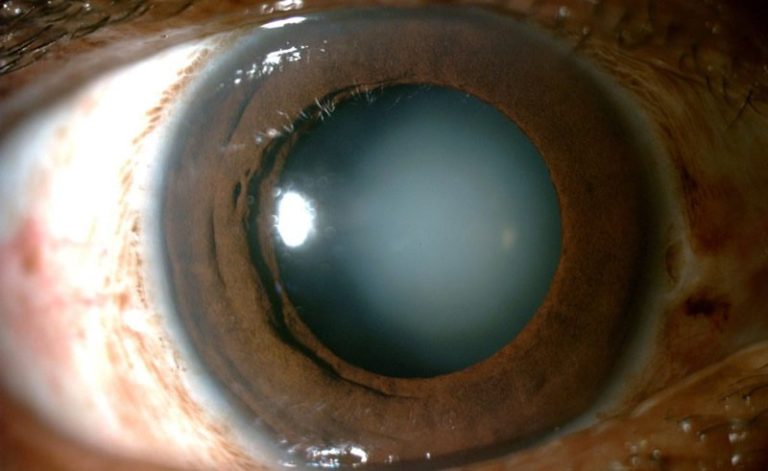
What is Cataract?
A commonly occurring vision problem generally as you age. Cataract results in progressively increasing vision issues and can finally result in blindness if left untreated. Thankfully, this vision issue is now easily treatable with excellent surgical outcomes and short recovery times.

What happens when you develop Cataract?
When cataract develops, the lens in the eye becomes cloudy and prevents the light rays from passing onto the retina. The lens in the eye is a clear transparent structure and helps to focus light rays onto the back of the eye (the retina) allowing us to see clearly, similar to how a camera lens functions.
Cataract Symptoms
Various stages and progression of cataract
How Cataract is Treated

Cataract treatment is safe and standardized. It is performed using Phacoemulsification technique in which the cataract is removed through a tiny incision and replaced with artificial plastic like soft foldable implant (IOL intraocular implant).
At our hospital in Mumbai we perform a No Pain-No Stitch-No Needle-No Bandage surgery using the Phacoemulsification technique
What to Expect during Cataract Surgery

Cataract surgery is an outpatient procedure. It is performed under local anesthesia. Duration of stay at the hospital is around two hours. Patient is sent home with some medications. Normal daily activities can be resumed in 5-7 days.
Advantages of Phacoemulsification technique - micro incision, fast recovery, less chance of complications, no injections or sutures, resume daily activities in 3-5 days.
Types of IOL (Intraocular Lens)
There are basically four different types of lenses that can be implanted -

Monofocal
IntraOcular Lens (IOL)
These Lens have a single focal point and enable clear vision for far objects. These lens cannot change focus from distant objects to near objects. For those with near vision challenges as well, glasses will be required. The latest version of monofocal lens - EDOF offer more flexibility by helping with intermediate vision in addition to correcting distance vision.

Toric
IntraOcular Lens (IOL)
These lens are designed to correct astigmatism/cylindrical numbers. This is an extra feature added on to both monofocal and multifocal IOL to correct astigmatism. Although cylindrical values of <0.75 diopters can be treated by LRI (Limbal Relaxing Incision), higher numbers require Toric Lenses.

Multifocal IOL
IntraOcular Lens (IOL)
These lens offer independence from glasses as they correct near and far vision.They offer comfortable functional vision thereby improving quality of life. Ideal for those who do not wish to wear glasses and enjoy an active life style.

Trifocal IOL
IntraOcular Lens (IOL)
These are newer generation lens which offer near, intermediate, and far vision. Intermediate vision is important especially for those that use screen time (laptops, tablets, smart phones etc). These lens also minimize night time glare and halos (compared to all other lens) and eliminate the need for glasses.
Frequently Asked Questions (FAQ's)
What is cataract surgery?
Cataract surgery is a process in which a clouded or opaque lens (cataract) is removed from the eye and replaced with an artificial intraocular lens (IOL) to restore clear vision.
How long does cataract surgery last?
The actual procedure normally lasts between 15 and 30 minutes. However, you should plan on spending a few hours at the surgical centre for pre-operative and post-operative recovery.
Does cataract surgery hurt?
No, cataract surgery is not usually painful. To numb the eye, local anesthesia is used, and you may be given a sedative to help you relax throughout the treatment. Following the procedure, some patients may suffer slight discomfort or a scratchy sensation, which can be relieved with prescribed eye drops or over-the-counter pain medicines.
Is cataract surgery conducted on both eyes simultaneously?
Cataract surgery is typically performed on one eye at a time. Your ophthalmologist will evaluate your specific circumstances and identify the best time to operate on each eye if both require surgery.
How long does it take to recuperate from cataract surgery?
Recovery times vary, but most patients notice an improvement in their eyesight between a few days to a few weeks of surgery. It is critical to follow your surgeon’s post-operative instructions, which include using prescription eye drops and avoiding vigorous activities for a set amount of time.
Will I require glasses after cataract surgery?
The necessity for glasses after cataract surgery is determined by a number of factors, including the type of intraocular lens utilised and your specific visual needs. While some people can achieve adequate distance vision without glasses, others may need glasses for particular activities, such as reading or close-up work.
What are the risks and complications of cataract surgery?
Cataract surgery is deemed safe with a successful outcome. However, like with any surgical procedure, there are risks and consequences, though these are uncommon. Infection, hemorrhage, edema, retinal detachment, or posterior capsule opacity (clouding of the lens capsule) are all possibilities.
When will I be able to resume normal activities after cataract surgery?
Most people can resume typical activities, such as driving and working, within a few days to a week of surgery. However, it is critical to follow your surgeon’s advice regarding any activity limits and to prevent rubbing or putting pressure on the eye while it heals.
Will my cataracts return after cataract surgery?
A cataract does not regrow once it has been removed. However, clouding of the capsule that houses the IOL (posterior capsule opacity) can develop months or years following cataract surgery in rare individuals. This is easily treatable with a simple laser operation known as YAG laser capsulotomy.
©Copyright. All rights reserved.
We need your consent to load the translations
We use a third-party service to translate the website content that may collect data about your activity. Please review the details in the privacy policy and accept the service to view the translations.




